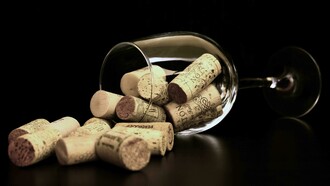On the lawn outside the university, spontaneous picnics had begun to emerge. They started in early June, when everyone was still getting to know one another, and when the warm air continuously beckoned us from our classrooms. I believe it was Patricia who instigated them, something about a compulsive need to bake when she was bored or anxious, that came with two lusciously moist cakes one day to prove her disorder.
I guess we had to believe her when she produced the evidence so readily. It soon seemed we had an entire class afflicted with this syndrome, and soon Tupperware were produced every lunch hour with mounds of creamy hummus, curries bespeckled with stray, shimmering chilli seeds, and trays of parmesan and black pepper biscuits, all from two AM study breaks gone awry. The rally cry was "someone get this food away from me!”
For our disorder meant that we would need to be cooking again the next night, feverishly licking a wooden spoon, asking the empty kitchen what was missing and whether there was enough salt in the dish. And we gladly would. It was delicious. Of course, we were eighteen foreign foodies, starting our Masters’ degree at the University of Gastronomic Sciences in Pollenzo, Italy. We spent six hours a day in courses about food politics and Italian regional food heritage and wine tasting and more of the minutiae of the food world. Obviously enough, food was the encompassing and bridging component in our lives, the introduction and the connector between disparate cultures and people.
Looking back, those picnics were possibly the best introduction to my classmates and their gastronomies, to techniques and tastes and spices that I had never heard of, into markets and cookbooks and writers and worlds that I didn't know. Dishes brought to the table opened up stories of home; stories of family, friends, and tradition. And the meals were enhanced by the company that came with them.
But back then, those early June picnics were just Patricia's flourless chocolate cakes; the tops’ cracked and the cakes’ slumped from the heavy weight of the rich ingredients, and Lizzie's dips and Luna's leftover Sicilian dinners. But they started to grow, to spare wine bottles snagged from a tasting class; a dark purple Chianti, mouth suckingly tannic, and some onyx colored, oil glistening olive tapenade from the last study trip, and a selection of local cheeses from the market down the road; one soft and almost formless, being held together only by its rind, otherwise it was liquid ivory, spilling in the warm June sun on it’s the brown paper wrapping. And again the picnics grew, from our small class of eighteen to including the other Masters’ class, to some of the third years, to the faculty, until our picnics were an institution on the lawn.
Later the picnics became a place for something that can’t be scheduled; informal discussion. They morphed into a social space to discuss with visiting professors, tutors, and other students, about lessons, or other issues in the food world. It was one of the few times that everyone could be involved.
I began to count down the minutes as the clocked ticked to noon. I was back in elementary school, waiting for the recess bell to let me out. But this was something different, it was a joint anxiety, first, because I was so hungry, something about the inadequacy of the Italian breakfasts that I never quite could get used to, even when I tried to 'Americanize' them, those unflavored Greek yoghurts and the super sweet breakfast cereals never went down first thing, and, those beautiful lunches were calling.
The university really was the perfect location for these little lunches. Like a set in a photo shoot for Food and Wine Magazine or Gourmet, we spread out our lunches with a converted castle in our background, an outstretched, manicured green lawn in the foreground, a Neo Gothic church just beyond us, and all the great weather and atmosphere a northern Italian summer can provide. You could almost imagine the caption, “Let’s feast!” scribbled above us.
Back in June, the season celebrated with us. The summer air and light and smells all reveled in the time, and it felt as though in that atmosphere you could get drunk simply being close to it. When autumn came, the weather held until November, and we were able to keep the tradition. While mornings were crisp, by lunch the sun had softened the day, and the lawn was once again the place to be. Around us the falling red and orange and burnt ochre leaves settled in piles and once again contributed to our sense of place. The air was cool and the sun was warm, and being outdoors made us hungrier still, with the smell of humus and truffles and pine needles and drying leaves, which to me, always smell like Christmas baking. But in November the rains came, and our picnics were adjourned. A class would end and we would stay in our seats, at our desks. Connected to computer screens and other worries, we lost our communal sharing.
By the time the weather had improved, we would all be eating at the new cafeteria. The university had imagined its own solution to the social and gastronomical void. Michelin star chefs joined us to serve up five star dining for the cost of five euros. The project was dubbed “Le Tavole Accademiche” (Academic Tables), and lunch was arguably being created in the most environmentally and economically sustainable manner, by serving local, seasonal products, traditional Italian dishes, and minimizing food waste.
From an institutional perspective, the whole project was; and is, exciting; especially to eat food prepared by some culinary icons at a prudential price. Yet, the simple meals that we first shared on the lawn outside of the university still stand out in my memory as some of the most memorable food experiences of my time spent in Italy.















